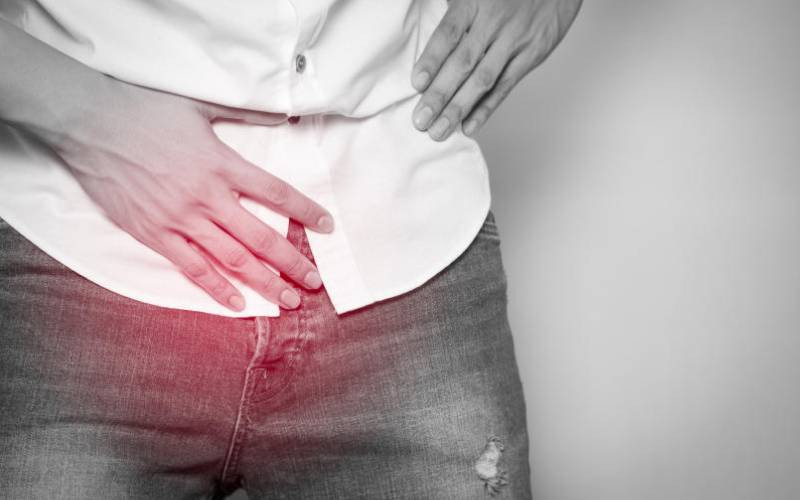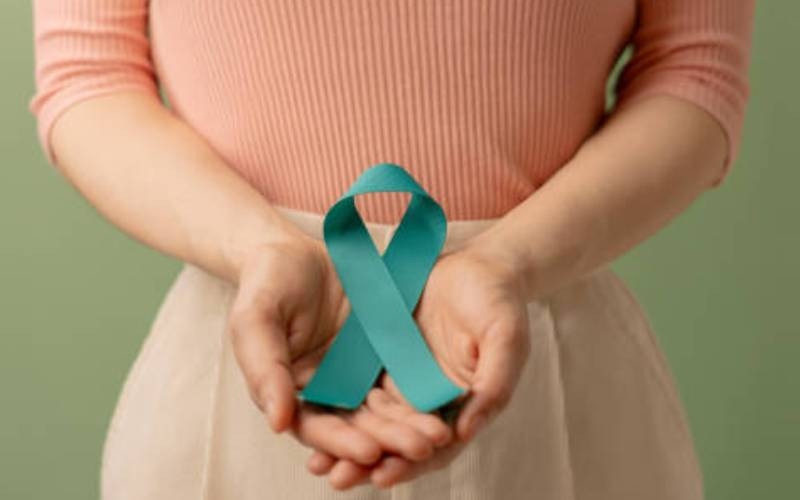
As long as she can remember, Halima Mohammed from Garissa County always experienced life-threatening excessive bleeding after delivering all her children.
Bleeding, sometimes to the point of needing transfusion, had been the case for all her four children, except her youngest son thanks the intervention of a Heat Stable Carbetocin (HSC), a medication that prevents excessive bleeding.
It does not require refrigeration and remains potent for at least three years if stored at 30 degrees Celsius and 75 per cent relative humidity.
Halima recounts how the delivery of her now four-year-old son at the Garissa County Referral Hospital was a smooth one unlike the other births.
“The nurse explained to me about this new medicine and helped me deliver safely,” says Halima.
Heat Stable Carbetocin is a uterotonic, a dose for contracting the womb to stop bleeding. It is effective in preventing postpartum haemorrhage (PPH) in vaginal and caesarean deliveries.
Postpartum hemorrhage in which women bleed uncontrollably after childbirth, is the deadliest of all complications during childbirth. Failure of the uterus to contract adequately after childbirth is the most common cause of excessive bleeding.
A 2017 research into all deaths of mothers by the Ministry of Health found that PPH is responsible for two in every five women’s deaths in Kenya.
Common causes of PHH, include uterine atony, retention of placental tissue, lacerations in the birth canal, and abnormal blood clotting with risk factors, such as prolonged labour and anaemia likely to worsen the situation.
Apart from known causes, many cases occur with no identifiable risk factors, making early detection and management important.
Like Halima, the same medication has helped women in Makueni County have positive birth experiences.
Excessive bleeding
The county public health facilities, over the last three years have been combining HSC alongside other strategies to tackle maternal mortality, significantly reducing deaths.
A spot check shows the medication is being used by even the lowest level health facilities in the county, such as Nzeveni Health Centre in Kibwezi, that women used to avoid before. The health centre has now become a go-to facility for expectant women.
Excessive bleeding after childbirth, medically known as postpartum haemorrhage, is Kenya’s and the world’s deadliest maternal health complication that accounts for most maternal deaths.
The Ministry of Health’s First Confidential Report on Maternal Deaths in Kenya by the National Maternal and Perinatal Death Surveillance and Response Committee found that most women died due massive bleeding in 2014.
Nine out of 10 who had died received sub-standard care, and 42.4 per cent of women who succumbed were on their first pregnancies or second while 8.9 per cent of women who died were below the age of 20.
Makueni County health executive Dr David Musila says reducing the deaths through excessive bleeding has led to a decline in maternal mortality.
However, an increased number of teenage pregnancies and failure by the age bracket to attend clinics still remains a major health problem.
Calibrated drapes
In 2019, the county was among top 10 devolved units in Kenya with the highest mortality rates at 479 deaths per 100,000 live births. Five years later, the county has reduced the numbers to 426 deaths per 100,000 live births, according to the county’s health indicators.
“It has been an aggressive strategy involving the county and all the partners, to ensure that healthcare workers can detect when mothers have excessive bleeding and treat within 15 minutes,” Dr Musila tells The Nairobian.
Before healthcare workers use HSC, Dr Musila explains they need to first know how to diagnose PPH, through simple locally assembled calibrated drapes.
Drape is a direct blood measurement technique which uses a BRASS-V clear curtain-looking pouch placed on the bed where mothers give birth for blood collection.
If blood loss passes the 250-mililitre mark it signifies a need for control while blood between 500 mililitres and 1,000 mililitres is classified as a danger zone hence postpartum hemorrhage.
One of the partners the county relied on is the Johns Hopkins Affiliate, Jhpiego, which ran a project called Accelerating Measurable Progress and Leveraging Investments for Postpartum Haemorrhage Impact (AMPLIPPHI).
Michael Mwiti, a midwifery and maternal health specialist at Jhpiego and AMPLIPPHI’s project lead, told The Nairobian that PPH kills women because it is detected late or even misdiagnosed altogether. “Most healthcare providers just check visually to assess bleeding, and that often underestimates how much blood a mother has lost, treatment is then delayed, leading to life-threatening consequences,” Mwiti said.
Prevention and treatment
With the support of the global health initiative Unitaid, the AMPLIPPHI trained 426 healthcare workers in Makueni on prevention and treatment of excessive bleeding after birth.
Like many healthcare interventions applied to a population, the training involved evidence, most notably from a global study.
In 2023, the World Health Organisation (WHO) published results from the E-Motive trial. The study involved over 200,000 women in four countries: Kenya, Nigeria, South Africa, and Tanzania.
The WHO-backed study conducted in 80 public hospitals in the four countries also showed that after the diagnosis, the healthcare provider, offers all the treatments available within 15 minutes, and not one after another as has been the practice.
When treatment is bundled as opposed to offering one after another, it reduces severe bleeding, surgery and even death by 60 per cent.
The bundle, includes using the calibrated drapes, massaging the uterus, administering uterotonics, such as HSC, giving the mother intravenous fluid. Further, the healthcare provider should examine the mother to establish whether there is need for a referral.
Many factors contribute to death of women, among them not giving birth in health facilities where the bleeding can be prevented and managed or quality of the medicine used to prevent bleeding.
A 2020 study reported a widespread problem with the quality of medicines used to prevent and treat PPH.
Heat exposure
“Compromised cold chain means that when women may finally obtain the uterotonic, the drug may be less effective due to heat exposure, endangering their lives. As we continue to strengthen the cold chain for PPH medicines, there is need to include a heat stable molecule in the PPH prevention basket,” says Mwiti.
A 2018 study led by WHO showed that HSC is as safe and effective as Oxytocin in preventing postpartum haemorrhage.
The clinical trial, the largest of its kind, studied as many as 30,000 women who gave birth vaginally in Argentina, Egypt, India, Kenya, Nigeria, Singapore, South Africa, Thailand, Uganda, and the United Kingdom.
Each woman was given a single injection of either heat-stable carbetocin or oxytocin immediately following childbirth.
The study found that HSC was not inferior to oxytocin in prevention of excessive bleeding after birth.
The study arrived at the conclusion that HSC was the essential dose for preventing excessive bleeding after birth.
With AMPLIPPHI in Makueni, the county already has a work force that can utilise the medicine and the drapes effectively. In 2023, the county received a donation of HSC as well as two other medicines for PPH prevention and treatment until next year.
Determined to prevent deaths resulting from excessive bleeding, the county has purchased 11,000 of the drapes.
Governor Mutula Kilonzo Jnr says county could not wait for the long arduous process of national policy that takes ages to implement.
“When we find evidence, that is sound, we will adopt it here in Makueni, because people are entitled to quality health, not quality policies or laws,” he notes.
The Governor called on the national government to easen taxation on foreign donations made for suffering populations in the country saying bureaucracies hinder development.
Dr Stephen Mwatha, the county’s director of Preventive and Promotive Services says they distributed drapes to all 242 health facilities that offer childbirth services in Makueni. Dr Mwatha says the number of drapes purchased is meant to serve the county up to June 2025.
While the drapes are not as costly, changing the operations of a health system is far from affordable - it involves training healthcare workers in more than the 100 health facilities in Makueni that offer childbirth.
Due to the strides made in Makueni’s health sector, the AMPLIPPHI project attracted legislators from the Italian parliament and others from the central African countries who were on a benchmarking mission.
“The world has made progress in addressing maternal health complications through partnerships. However, disease screening and treatment is still a challenge in most of the regions,” said Federica Onori, an Italian Parliamentarian
Christine Mutiria is a lead mid-wife at Makueni Mother and Child Unit. She confirms the facility to have made a tremendous progress in safeguarding the life of mothers and their babies.
 The Standard Group Plc is a multi-media organization with investments in media platforms spanning newspaper print
operations, television, radio broadcasting, digital and online services. The Standard Group is recognized as a
leading multi-media house in Kenya with a key influence in matters of national and international interest.
The Standard Group Plc is a multi-media organization with investments in media platforms spanning newspaper print
operations, television, radio broadcasting, digital and online services. The Standard Group is recognized as a
leading multi-media house in Kenya with a key influence in matters of national and international interest.










